If you're new here, you may want to subscribe to my RSS feed. Thanks for visiting!
Author of Be Ready for Anything and Build a Better Pantry on a Budget online course
What would you do if you were out at a tourist attraction or traveling, and suddenly, it looked like things were about to go sideways? For this exercise, we’re going to pretend that for some reason, we don’t have our emergency gear with us. Maybe it’s in the car that’s on the opposite side of the melee, maybe you forgot it, or maybe you never even had a kit to begin with.
Suspend your disbelief for a moment and let’s create a bug-out bag that will help us get to safety. This information is based on the things I learned when I went to Selco’s last Urban Survival Course for Woman.
In the course, we talked a lot about the pillars of survival and the basics you want to have covered at all times. You want to be able to navigate, make fire, have water, have food, protect yourself, perform crisis first-aid, have basic sanitation items, and have shelter from the elements. For the purposes of this exercise, I was putting together an emergency bug-out bag.
What you want is the skill, knowledge, and flexibility to put together a survival kit quickly and under less-than-ideal circumstances.
(My first piece of prepper fiction, Three Miles, was inspired by the research I did for this article.)
Setting the scene
I made my emergency kit at the beautiful Monastiraki Flea Market in Athens, Greece. It’s a crowded weekend tourist attraction and a lot of fun to visit. I went there on a Sunday, the busiest day, with the sole purpose of putting together a kit so I could leave quickly.
I got the idea when I was working on a piece of fiction. (Finally, I’m writing some fiction, after you all have been asking me to for years.)
Why do I need to leave? There could be any number of reasons. For example, what if I noticed a bunch of protesters setting up in the square? What if I saw a bunch of cops in riot gear getting out of vehicles to face off with protesters? What if there was simply such a change in baseline (I discussed baseline in this article) that I just knew something was about to go down? Never discount your intuition. If you think things are going south, in the wise words of Toby and Selco, “Don’t be there.”
What supplies should you get and in what order?
Now for the fun part – putting together your kit as fast as possible.
Many of these things, a prepared person would already have on hand. But we all know that emergencies have a way of striking when we least expect them. When we took the kits out of our trunk to transport something large, or when we’re “just stopping for a moment” – those are the times when disaster will hit. Murphy’s Law.
So pretend you’ve got nothing but a wallet for the sake of this exercise.
If you are fully confident that you know what the pillars of survival are, creating a kit based on only what is available at a given moment won’t be difficult. We talked about this multiple times per day in Croatia, and it’s second nature, now, for me to have at least a minimal kit with the things I might need. And if for some reason I didn’t have that kit, I could assemble a reasonably useful version of it quickly.
What you’re looking for here if flexibility. If you’re caught without your supplies for whatever reason, how can you quickly put together what you need within the limitations of where you are?
You could find most if not all of these items at a convenience store, an American pharmacy like Shoppers, or a recreational location like a flea market or tourist area.
So what are you going to do when all hell is about to break loose and you may need to head out on foot to get to safety? Here’s what I did at the market.
1.) Hit up a convenience store or kiosk
This place was a survivalist gold mine.
- Grab yourself a map of the area. This is particularly important if you’re traveling. How in the world are you going to get to safety – whether that’s back to your apartment, to a friend’s place, or to the US Embassy – if you don’t have a map? You can find maps at most convenience stores or kiosks. If they don’t have a map, ask where to get one – they may be able to help you. For the love a fluffy kittens, don’t rely on your phone for navigation. On more than one occasion, cell signals have been blocked during riots.
- Water – heavy, yes, but there’s no way you’re going to find a water filtration device at a tourist location. I grabbed 3 one-liter bottles.
- Food – I also got some cashews and a bag of dried banana chips. Your choice of snacks may be limited – this isn’t a moment where you need to think about being on keto or everything being organic. You need to grab something and get out. I always opt for nuts of some sort for the protein, and then something carby. Even Peanut M&Ms would be a reasonable choice in this situation, assuming you are not diabetic or allergic to nuts. Obviously, use your head.
- Lighter – you always want to be able to make fire.
- Vodka – it was right there at the kiosk so I bought a small bottle of vodka for first-aid purposes.
- Kleenex – just in case you’ve got to do your business without the luxuries of a bathroom and toilet paper.
- Hand sanitizer – one of those tiny keychain ones. Even if you don’t normally use hand sanitizer, these are unusual circumstances. You’re not going to be able to wash your hands after you pee in an alley and before you eat your snacks. Get hand sanitizer.
2.) Get a backpack.
When I’m traveling, 90% of the time my Eagle Creek backpack is what I use instead of a purse. But assuming you don’t have anything to carry your stuff in, grab a backpack. At tourist venues, it seems like every other store sells backpacks so this should be fairly easy to find. They even had them at the kiosk where I got the items above. A backpack will help you to disperse the weight of what you’re carrying much better than a couple of shopping bags would.
I recommend getting something discreet like black, dark gray, navy, or olive green. This is because if you’re out after dark, you don’t want a fluorescent beacon on your back when you’re trying to lay low.
3.) Get a knife.
Okay, this is the tough part. You may carry a firearm 99% of the time, but in our exercise, you don’t have it. Obviously, if you’re at Disneyworld or in a foreign country, you’re not packing heat.
Using a weapon in this situation is going to be an option of last resort. You don’t want to be thrown into a foreign prison.
Keep in mind that if things are heated, there’s a chance you could be stopped by the police and searched. So your weapon needs to be something that you can explain. I purchased a beautiful folding knife and put the knife, bag and all, in my pocket. If I had to explain it, I could say it was a gift for someone back home. As long as the bag is open, you have reasonably easy access to your knife, and knives are useful in many ways aside from self-defense.
Generally speaking, in most places, a folding knife will get you into less trouble than a dagger. The onus is on your to understand the laws surrounding blades in your location. Pick a knife that is sturdy and sharp already.
Again – this is the last resort. Using a knife for self-defense without a lot of training is pretty dangerous. There’s, unfortunately, a fairly large chance the knife will be taken from you and used against you if you don’t know what you’re doing. But all things considered, I’d still rather have one than not have one.
4.) Get all the cash you can.
ATMs are everywhere. Take out the max amount you can on each card you have on you. Put the cash in different places – your front pocket, deep inside your backpack, in your shoe. Don’t keep it all in one place. Please be discreet when stashing your cash.
If you have cash, you may be able to buy your solution. You may be able to offer a cab driver who wasn’t planning to take any fares enough money to take you to safety. You may be able to purchase some essential items that a person wasn’t planning to part with if you wave enough money at them. Obviously, use common sense so that you don’t end up getting robbed.
If things are really sideways, all the bank machines and credit card machines could go down quickly – make this one of your primary stops. If you’re with someone, make sure they get as much cash as possible too and have them spread the money around too.
5.) Change your appearance
You may be wondering, “Why on earth would I want to change my appearance?”
There are so many reasons. First, it depends on the nature of the emergency that has you collecting this kit.
If you are the only redhead in a park full of olive-skinned brunettes, you’re going to stick out like a sore thumb. You don’t want anything about yourself to scream “tourist” or “foreigner.” You don’t want anything that says “tough guy” or “pretty girl.” It’s far easier to slip through a group unnoticed if there’s nothing particularly noticeable about you.
Remember – you want to fit in with baseline. If you don’t you’re going to draw attention to yourself. Attention of any type in these scenarios is bad. Pick up these three multi-purpose items to blend with the crowd.
- A hooded sweatshirt – never underestimate the value of a hoodie. I wanted to get something solid but couldn’t find anything. I ended up getting a black one that said “University of Athens” because I thought it looked slightly less touristy than the ones that had a big sparkling Spartan on them. I’m not thrilled with the white writing on it, but to get this done fast, it was the best choice. Not only can a hoodie keep you warm, but it can also change the profile of your body. If you’re a woman, a hoodie can hide your curves which could be very beneficial in an emergency. Male or female, it will make you look a little bigger than you are. Obviously, if it’s 115 degrees, wearing a hoodie will do the opposite of helping you blend in. In that case, go with an oversized t-shirt.
- A baseball cap – Speaking of changing your appearance, covering your bald head or your bright red hair can make you a little less easy to recognize if you want to disappear into a crowd. If it starts raining, the bill of the cap will keep the rain off your face – especially important if you wear glasses.
- Sunglasses – These can also help change your appearance a bit. As well, they’ll protect your eyes in bright conditions and offer a small (very small) amount of protection against smoke.
6.) Protective clothing
Finally, you will want to pick up some protective clothing.
- A large scarf – this is very multipurpose. You can use it as a bandage or even a tourniquet if someone is wounded. You can use it to cover your nose and mouth in the event of smoke or tear gas. (Although note that the protection a scarf will offer against tear gas is extremely limited – being as far away as possible or having a handy gas mask are your best defenses against tear gas.) You can even use it to stay a little bit warmer if temperatures drop.
- Rain poncho – Almost all tourist places carry rain ponchos of some description. They might be those cheapo, clear plastic ones or they might be a heavier better-quality one. If it starts pouring and you are out in the elements, you’ll be glad to have some small bit of protection against the moisture. If you end up sleeping outside, your poncho can give a modicum of shelter from the cold cement or ground beneath you.
You want to stay warm and as dry as possible if you’re taking evasive action or hunkering down until the danger has passed.
How long did this take?
I was able to acquire (or at least locate) the items on the list above within 13 minutes, including waiting in line to buy things. You might not always have 13 minutes and if that’s the case, ensure you have a map and grab what you can from one location. I stopped at a kiosk, a knife store, a souvenir store, and an ATM.
If you’re traveling outside the US you need to always ALWAYS have your passport handy. If you needed to go to the US Embassy for help, you would not be admitted without it in most circumstances.
Here’s the kit I put together. Not shown: snacks, hand sanitizer, and poncho.
Keep in mind that this kit is not meant to sustain you for a week. It’s a 24-hour kit to give you time to get someplace safer than where you are when things go wrong. You might be a little hungry, but this would get you through a day or so fairly easily.
What do you think?
Do you feel confident you could put together a survival kit in less than 15 minutes? What would you add that I did not? Let me know your thoughts on this kit in the comments.
About Daisy
Daisy Luther is a coffee-swigging, globe-trotting blogger who writes about current events, preparedness, frugality, voluntaryism, and the pursuit of liberty on her website, The Organic Prepper. She is widely republished across alternative media and she curates all the most important news links on her aggregate site, PreppersDailyNews.com. Daisy is the best-selling author of 4 books and runs a small digital publishing company. You can find her on Facebook, Pinterest, and Twitter.

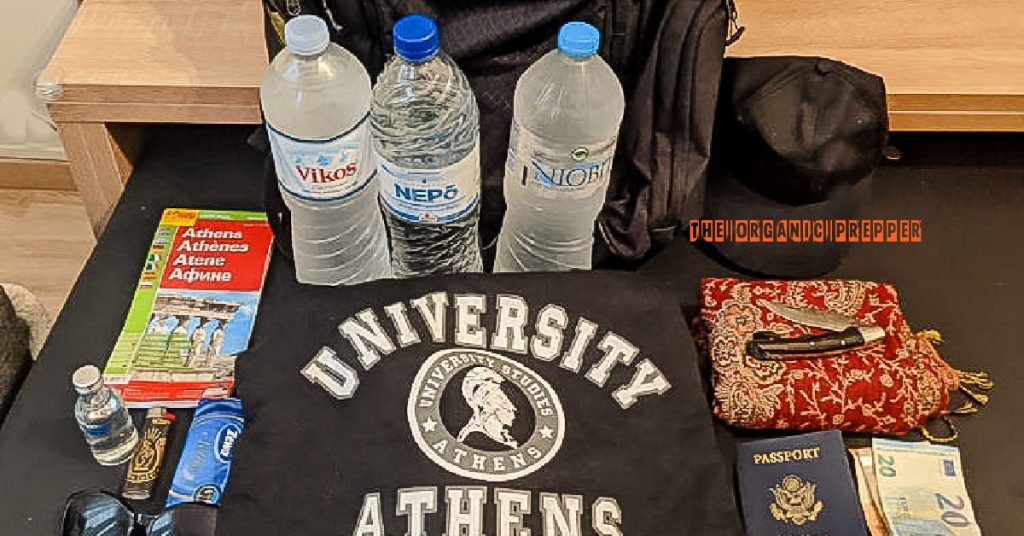
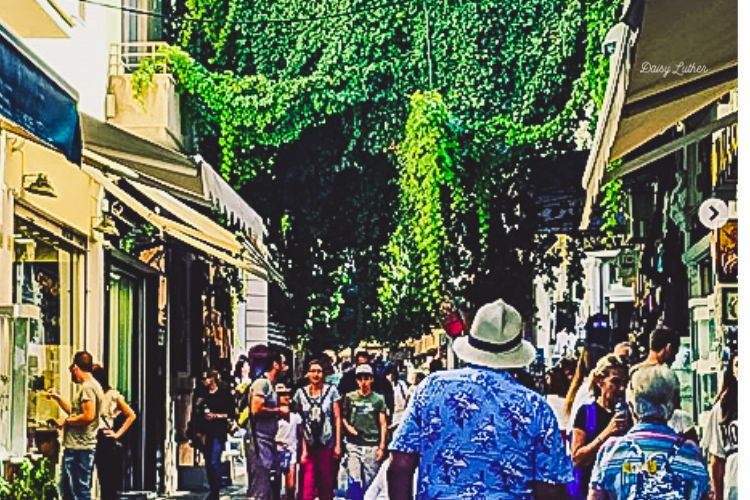
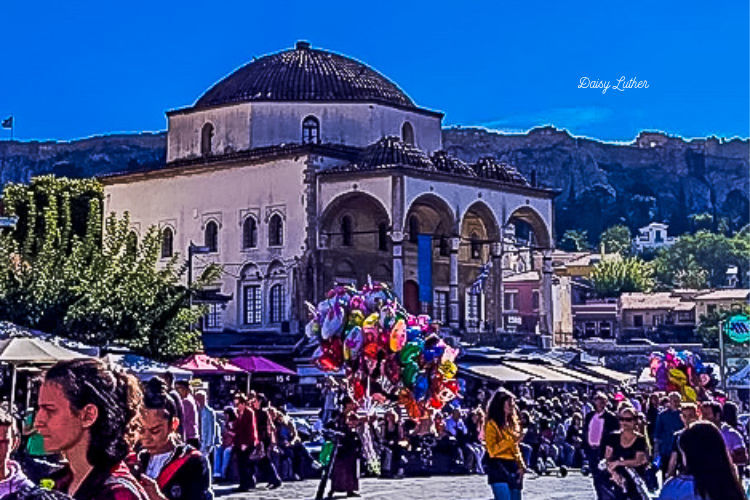
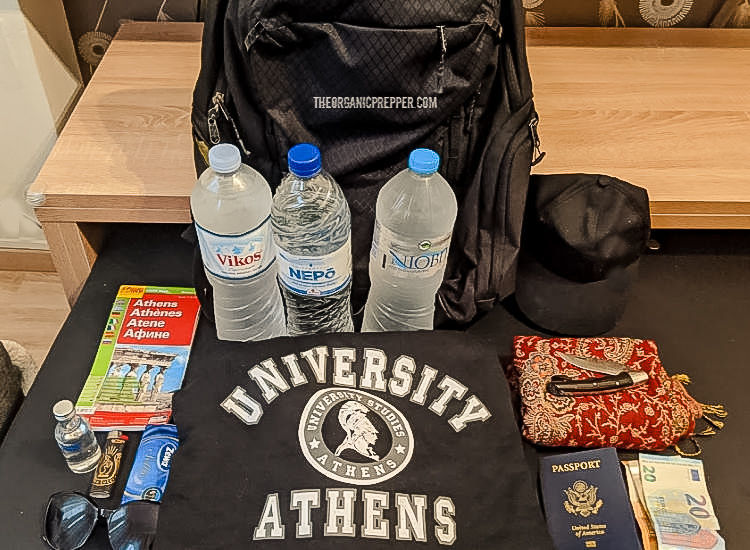
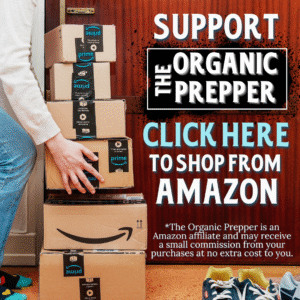













24 Responses
Excellent list. I would add bandaids, a bandana and a small flashlight or matches.
Good short list. If your in a theme park, the only map you are likely to find is of the park and you probably already have one of those. You should find a street or highway map when you get out of the theme park (unless you brought one in with you). A compass would be nice but you won’t find that in a convenience store.
Very good. I’ve traveled a few places, but I can’t think of anything to change in the list.
Perhaps I can add that there exist offline GPS apps for phones, so that you may not need to whip out a paper map when they jam all signals.
Also, the goal is to get to safety fast. A printout of all friendly embassies and consulates made ahead of the trip (us, can, uk, aus) is vital.
If there is one, grab a black sharpie to black out the decal on the sweatshirt. might come in handy for other things as well.
in a pinch when you make the decision to MOVE away from the threat, why not turn the sweatshirt inside out?
I’m an older guy, in my early 70s. My weaknesses are my heart and migraines & feet. I don’t go anywhere without a vial of 3 days heart meds around my neck and 6 tylenol + 10 regular aspirin & spray nitroglycerin, along with tiny photocopies of my prescriptions inside the vial. I would buy a pair of hiking sox if I cud find ’em.
If you’re in a touristy area, note what sort of head coverings the locals are wearing. Women cover their hair with kerchiefs? Men wear fedoras? Buy one. Blend in.
I agree. Baseball caps are mostly American, although I did see quite a few in Greece last year, I’m balding so I wear a ball cap constantly but I specifically bought a ‘driving cap / flat cap / newsboy hat’ to blend in with the locals.
I also brought my 40 year old Swiss Army Knife (red color). It was confiscated by the ship line on our first cruise in 2011 (and returned upon arriving at original port of call) but this trip (same cruise line) never said boo about it upon boarding at each port (walk-through metal detector and x-ray machines).
Even though you bought bottled water, I still packed 2 Life Straws for us to carry in our shoulder bag (no backpacks, again… blend in with the locals)
And… I did pack a small first-aid kit along with some Benadryl, Anti-Diarrhea and Tylenol.
I’ve traveled all over the world, from Alaska to Australia, Afghanistan to the South Pacific and Thailand, some places were/are friendly, some not so much… but these are the same items I pack each time I travel whether civilian or military (retired now so no more of that, it’s all pleasure now.)
Rob,
Please consider my comment from a few days ago and work with Daisy to see if she’ll let you contribute articles(s) based on your first hand experiences.
I really appreciate this article. This is why I always keep my passport or a copy on my person while traveling. The list is great! I’m now thinking about things I never think about and I’m appreciating that. .
If its cold, pick up a newspaper.
Great list! I would probably add a pan to cook with it needed.
Versions of this project have been covered under the search phrase of GET HOME BAG — if you run that search on DuckDuckGo.com. Most of them assume that you have some time and retail resources access, unlike the spur of the moment situation such as Daisy has defined. And most of them don’t consider the challenge of being in a foreign country where you may not speak the language or be able to read local signs. There are instant language translators available for cell phones, as well as stand-alone translaters that do the same job, such as this one:
https://gtbensmagazine.com/2019/06/10/this-japanese-invention-lets-you-speak-43-languages-instantly-the-idea-genius/
Or there are the foreign language phrase books, with a history of being used as far back as the Middle Ages:
https://en.wikipedia.org/wiki/Phrase_book
The 6-day banking shutdown back in 2015 in Greece was also a hurdle for some people. ATM withdrawals were limited to 60 euros per day.
The following link was just one of many search hits that came up, and yes, it assumes the usual preparation time and retail access ahead of any need. Still, it has some useful insights into what gadgetry can work in a “get to a safer place” effort (and therefore what your situation might be without some of it).
https://secretsofsurvival.com/get-home-bag/
Some random thoughts
Of all the colors mentioned to low to no visibility after dark, dark blue is the best possible choice for a backpack, or anything else (like clothes, eg) you don’t want to attract attention.
It seems to me that any backpack with MOLLE type technology literally screams “military” or “police” or “potential enemy” — the worst possible message that you don’t want to give to the locals.
The heaviest grade of huge trash bags (typically called contractor grade in the US) can be invaluable as emergency ponchos or sleeping bags, etc. Smaller sizes could be more appropriate for waste disposal — without creating a trail of new San Franciscos as you go.
The article strongly promotes a micro-sized camping stove called the Solo Stove, without mentioning it comes in several different sizes. The smallest is the “Lite” version, which would be appropriate for a one-person emergency such as postulated here. But it only makes sense if you are confident you can start a fire using found dry twigs (or even easier, kitty litter or wood pellets). A little gelled alcohol (such as from Sterno fuel) will respond to your Bic lighter almost instantly and turn that kitty litter into a highly useful cooking or boiling fire. While the smallest Solo model starts around $80 or so, the cheap Chinese knockoffs on eBay range from $20 to $30 and work just as effectively — and compact down superbly for global travel. Oh, with the right spacer that you can create from a used tin can turned upside down and cut to the right length, it can position even a Trangia style alcohol burner (or Esbit solid fuel chunk) inside a Solo stove (or knockoff) for superb multi-fuel capabilities. (Trangia style burners work best with a 38 mm distance between the base of the alcohol flame and the underside of the cook or boiling pot — for best heat efficiency and minimum carbon monoxide output.)
Could you buy some kitty litter and Bic lighters (or whatever the local brands are) at a local store in a foreign country?
–Lewis
Very reasonable short term kit, I would add material for first aid and a second or larger hand sanitizer as part of the first aid gear.
Wow, was this a great post or what! The only things I would add would be anti biotic ointment and bandaids…
For the knife, I would suggest an Opinel or one of the simpler SAK knives. The Opinels are made with an easy to sharpen carbon blade and are priced very reasonably. The benefits of the SAK are an assortment of tools which may become useful in emergencies. Scissors and awls particularly in the urbans and the saw blade in the rurals are good tools.
The shemagh ican be configured as a carrier, concealment, water filter and other uses. Slightly bulkier than a handerchief but more useful.
Very good post.
What is a “shemagh”? I can’t find that in Wikipedia, or is that not an English word? A link would be helpful.
It’s an Afghan scarf. You might be able to find more information under the word “keffiyah.” Depending on where you are, be careful of the pattern you get, because they can have tribal links. https://amzn.to/34F3nTl
Before I travel somewhere new I always review pictures of the locations, including the local people and their attire. While I have to travel in clothes that are secure and adaptive (think ‘layers’), I do try to avoid the local tourist trap of logo T-shirts, jeans and baseball caps.
Don’t get me wrong, because I do purchase local versions of those while travelling; however I just don’t wear them or display other things that make me a target.
The worst that will happen is someone local asks you something in the regional dialect and language. Yes, that’s happened to me. I just point to maps if it’s directions, or nod and walk on if I don’t understand. They might think I’m too busy or rude, but just not a ‘Rude American’.
No matter where it is, tourist traps are designed to make high profits from travellers with too much money and too little time.
I travel for work, so like most contractors have neither in abundance.
I would add a flashlight or headlamp and some batteries. A mini IFAK with a few meds; aspirin, Benadryl, Immodium.
Very good list. Thank you for sharing.
Think it can’t go down hill FAST? Think about the recent riots in Chile over an increase in bus fares, and now in Iran over a minor increase in fuel prices. The article linked below was written on October 22, 4 days after the riots started in Santiago, Chile. Look closely at number 2 and read how fast it happened.
https://www.zerohedge.com/news/2019-10-22/four-lessons-biggest-riots-decades
Two thoughts
If possible, pick up either a small button compass (or even a washer-shaped magnet so a string through the hole can suspend it, plus a mark or piece of tape on the side of that magnet that will point roughly to north) because at night (or even daytime when the sky is overcast) you can easily get direction turned in an unfamiliar location … and that map will be a lot less useful.
Realize that the small bottle of hand sanitizer gel you picked up is usually made with a high percentage of alcohol — which also makes a great fire starter with a little dab applied to a cotton ball or a cotton cosmetics removal pad, etc.
–Lewis
Just came across this article but did want to comment on the baseball cap. This may work in some countries, but in others a baseball cap screams westerner, and more particularly American.
About the scarf not offering much protection from smoke or gas: if nothing else is available, pee on it! During WWI, soldiers enduring gassing by the Germans in the trenches discovered that some compound in urine helped to neutralize the effects to some extent. If you have enough room in your bag to bring one of those flimsy disposable rain ponchos, opt instead for a ‘space blanket’ survival poncho. It is also waterproof, and also reflects your body heat back at you, keeping you warmer. For travelling in foreign countries, I highly recommend buying special travel clothing with hidden zippered pockets. My travel socks have zippered pockets big enough for a credit card, and I have travel undies that can fit a passport in a zippered pocket right in front. Unless an attacker strips you naked, they will not find it.